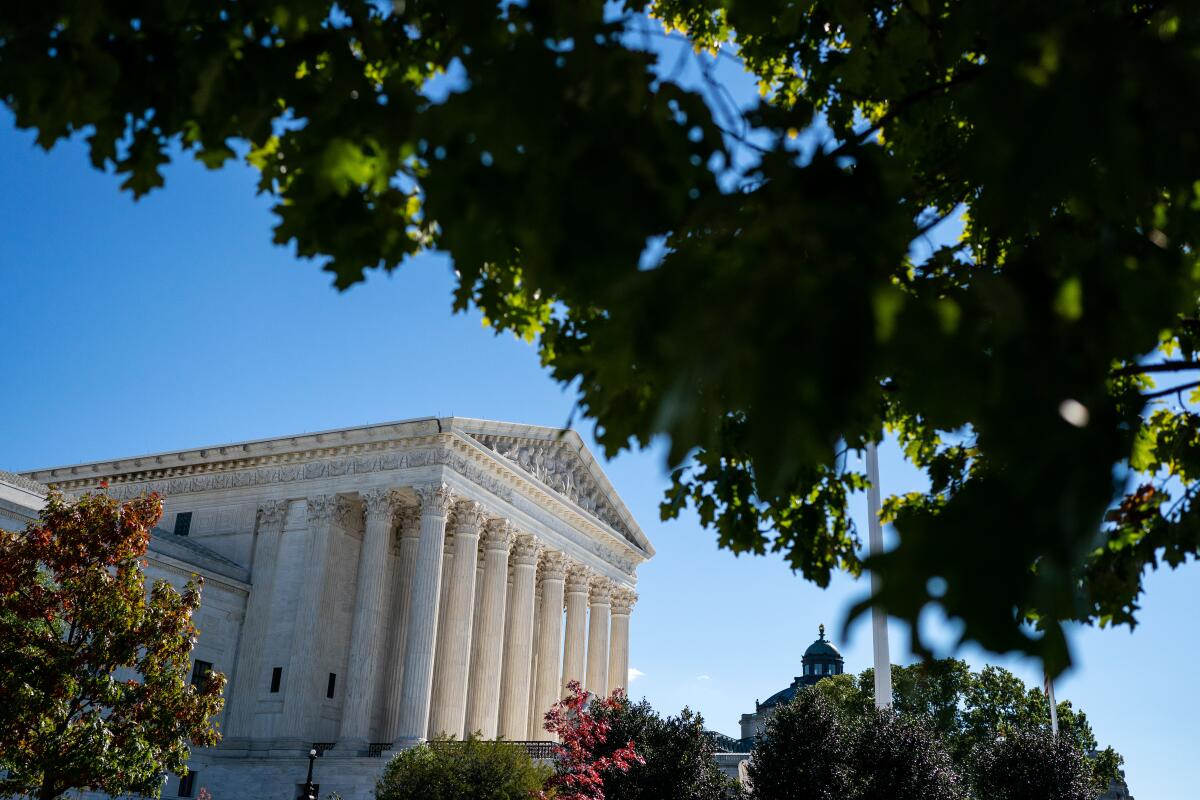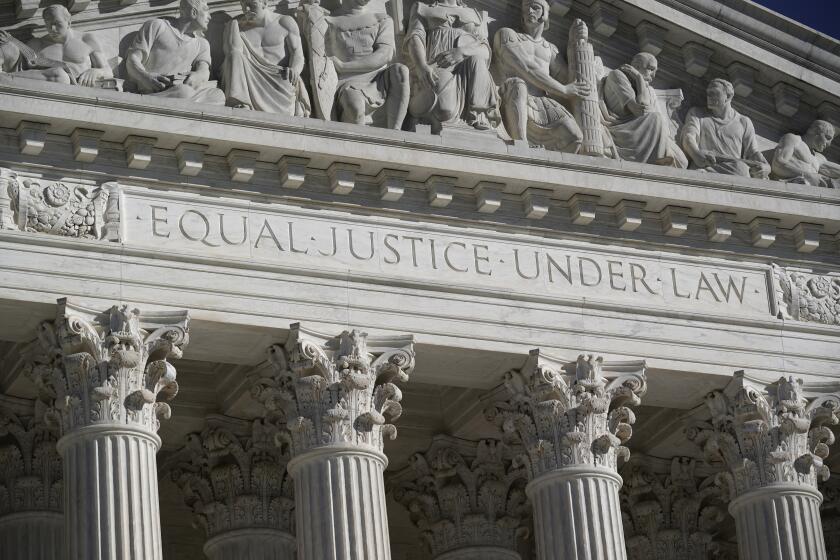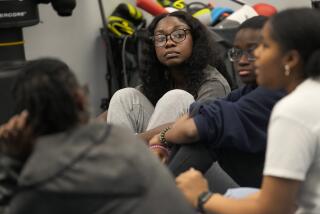Op-Ed: If the Supreme Court bans affirmative action, it continues the U.S. legacy of racial discrimination

The Supreme Court granting review on Monday to two cases about affirmative action is an ominous sign for diversity in higher education and advancing racial equality. Given the composition of the court, it seems very likely that the six conservative justices will use these cases to ban any form of affirmative action in the United States.
The two cases — one involving the University of North Carolina and one involving Harvard — both deal with this question: Can universities continue to use race as one factor in admissions decisions to enhance diversity on campus?
In the UNC case, the challengers argue that the affirmative action program, which the university says fosters educational diversity, violates the Constitution’s requirement of equal protection. In the Harvard case, the challengers accuse the private university of violating the 1964 Civil Rights Act, which prohibits recipients of federal funds from discriminating based on race. They claim Harvard discriminates against Asian American applicants by penalizing them for subjective personal traits.
The Supreme Court takes on affirmative action, and its conservative justices may be ready to forbid race as a factor in admissions to universities.
Under long-standing decisions going back to the 1970s, the Supreme Court has upheld the use of affirmative action programs in college admissions as constitutional. The court has consistently found that universities have a compelling interest in having a diverse student body and may consider race as one factor among many factors in admissions to benefit students of color.
As Justice Sandra Day O’Connor explained in 2003, in upholding the University of Michigan Law School’s affirmative action program, the court’s conclusion “is informed by our view that attaining a diverse student body is at the heart of the Law School’s proper institutional mission.” And further, she wrote: “In order to cultivate a set of leaders with legitimacy in the eyes of the citizenry, it is necessary that the path to leadership be visibly open to talented and qualified individuals of every race and ethnicity.”
The long history of racial discrimination in the United States means that race-blind admissions would simply allow the effects of historic discrimination — embodied in racial bias in K-12 education, income inequality and segregation — to carry on, especially in elite colleges and universities. That has certainly been the experience in California and Michigan and every state that has eliminated affirmative action programs.
The question now is whether the conservative court will overrule all of those earlier cases — even when the universities’ administrators show that these admissions programs are critical to the educational experience for all students.
Many students are dispirited because as far into the future as they can see, the court appears likely to do more harm than good to democracy.
The recent change in the makeup of the court is virtually certain to change the law. In 2016, the affirmative action program at the University of Texas was upheld by a court majority that included Justices Anthony M. Kennedy and Ruth Bader Ginsburg. Chief Justice John G. Roberts Jr. and Justices Clarence Thomas and Samuel A. Alito Jr. dissented and were emphatic that they would declare all affirmative action unconstitutional. Since 2016, three conservative justices have joined the court— Neil M. Gorsuch, Brett M. Kavanaugh and Amy Coney Barrett — all of whom are expected to strongly oppose affirmative action.
Eliminating race as a factor in admissions will significantly reduce minority admissions. We saw that happen in California when in 1996 voters passed Proposition 209, which banned state government institutions from considering race in public education, public contracting and public employment. At UCLA, for example, admission rates for underrepresented minorities plummeted from 52.4% in 1995 to 24% in 1998. As a result, the percentage of underrepresented minorities fell by more than half: from 30.1% of the entering class in 1995 to 13.6% in 2012.
The decline in minority representation at the University of California came even as the minority population in California increased. At UCLA, for example, the proportion of Latino first-year students declined from 23% in 1995 to 17% in 2011, even though the proportion of Latino college-aged people in the state increased from 41% to 49% during that period. The proportion of Black freshmen at UCLA declined from 8% in 1995 to 3% in 2011, even though the proportion of Black college-aged persons in California increased to 9% during that same period.
There is no doubt that achieving diversity is important to providing rich and culturally relevant educational experiences as well as addressing the legacies of racial injustice.
I have been a professor for 38 years, and I have taught constitutional law and criminal procedure both in classes that are almost all white and those that are racially diverse. Students have a different experience learning about, say, the legal and societal issues of racial profiling by the police when there are Black and Latino men in the classroom who can talk powerfully about their experiences of being stopped by police for no reason. Conversations about racial bias and civil rights are different when there are students of color in the room. Preparing students for the racially diverse world they will live and work in requires that they learn in racially diverse classrooms.
The Supreme Court will be hearing the North Carolina and Harvard cases in October and will probably decide them in spring 2023. Universities around the country and their students will then probably have to contend with the challenge California has struggled with for 25 years.
Erwin Chemerinsky is dean of the UC Berkeley School of Law and a contributing writer to Opinion. He is the author, most recently, of “Presumed Guilty: How the Supreme Court Empowered the Police and Subverted Civil Rights.”
More to Read
A cure for the common opinion
Get thought-provoking perspectives with our weekly newsletter.
You may occasionally receive promotional content from the Los Angeles Times.








